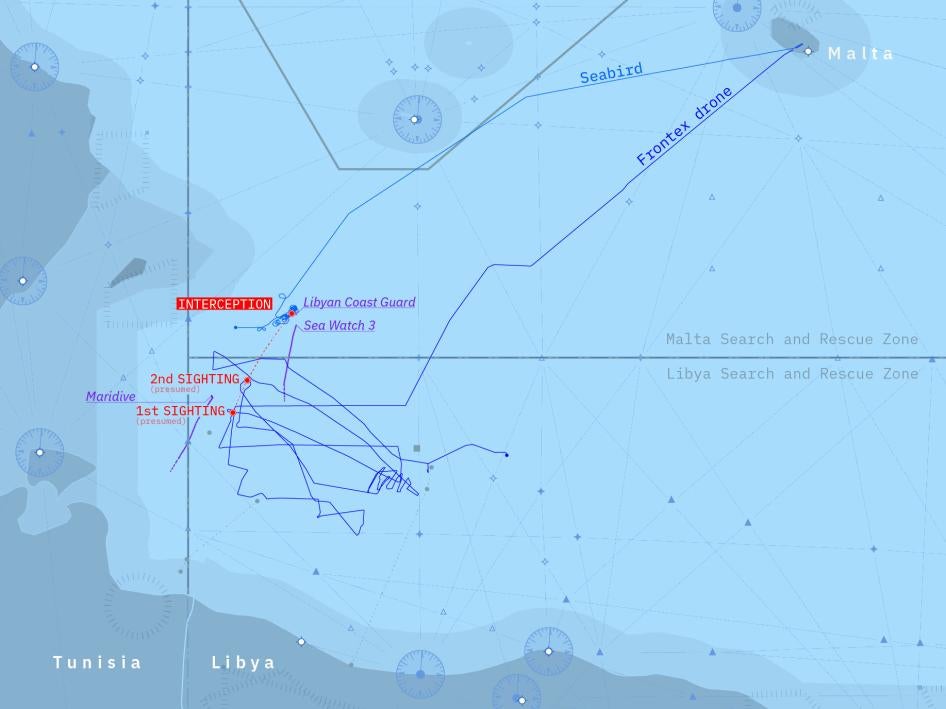Frontex Aerial Surveillance Facilitates Return to Abuse in Libya
“We didn’t know it was the Libyans until the boat got close enough and we could see the flag. At that point we started to scream and cry. One man tried to jump into the sea and we had to stop him. We fought off as much as we could to not be taken back, but we couldn’t do anything about it,” Dawit told us. It was July 30, 2021, and Dawit, from Eritrea, his wife, and young daughter were trying to seek refuge in Europe.

Click to expand Image
Reconstruction of the July 30, 2021, interception facilitated by Frontex drone. In addition to the track of the Frontex drone, the map shows the track of Seabird (a Sea-Watch airplane) that witnessed the interception. It also shows the NGO vessel Sea Watch 3 in the vicinity. There is no vessel tracking data for the Libyan Coast Guard patrol boat Ras Jadir or the intercepted vessel. Map courtesy of Border Forensics.
Instead, they were among the more than 32,450 people intercepted by Libyan forces last year and hauled back to arbitrary detention and abuse in Libya.
Despite overwhelming evidence of torture and exploitation of migrants and refugees in Libya – crimes against humanity, according to the United Nations – over the last few years the European Union has propped up Libyan forces’ efforts to intercept the boats. It has withdrawn its own vessels and installed a network of aerial assets run by private companies. Since May 2021, the EU border agency Frontex has deployed a drone out of Malta, and its flight patterns show the crucial role it plays in detecting boats close to Libyan coasts. Frontex gives the information from the drone to coastal authorities, including Libya.
Frontex claims the surveillance is to aid rescue, but the information facilitates interceptions and returns to Libya. The day Dawit and his family were caught at sea, Libyan forces intercepted at least two other boats and took at least 228 people back to Libya. One of those boats was intercepted in international waters, inside the Maltese search-and-rescue area. The drone’s flight path suggests it was monitoring the boat’s trajectory, but Frontex never informed the nearby nongovernmental Sea-Watch rescue vessel.
Human Rights Watch and Border Forensics, a nonprofit that uses innovative visual and spatial analysis to investigate border violence, are examining how the shift from sea to air surveillance contributes to the cycle of extreme abuse in Libya. Frontex’s lack of transparency – they have rejected ours and Sea-Watch’s requests for information about their activities on July 30, 2021 – leaves many questions about their role unanswered.
Dawit and others panicked when they saw the Libyan boat because they knew what awaited upon return. He and his family ended up in prison for almost two months, released only after paying US$1,800. They are still in Libya, hoping for a chance to reach safety in a country that respects their rights and dignity.

Lorenzo Pezzani
Co-director, Border Forensics

No comments:
Post a Comment